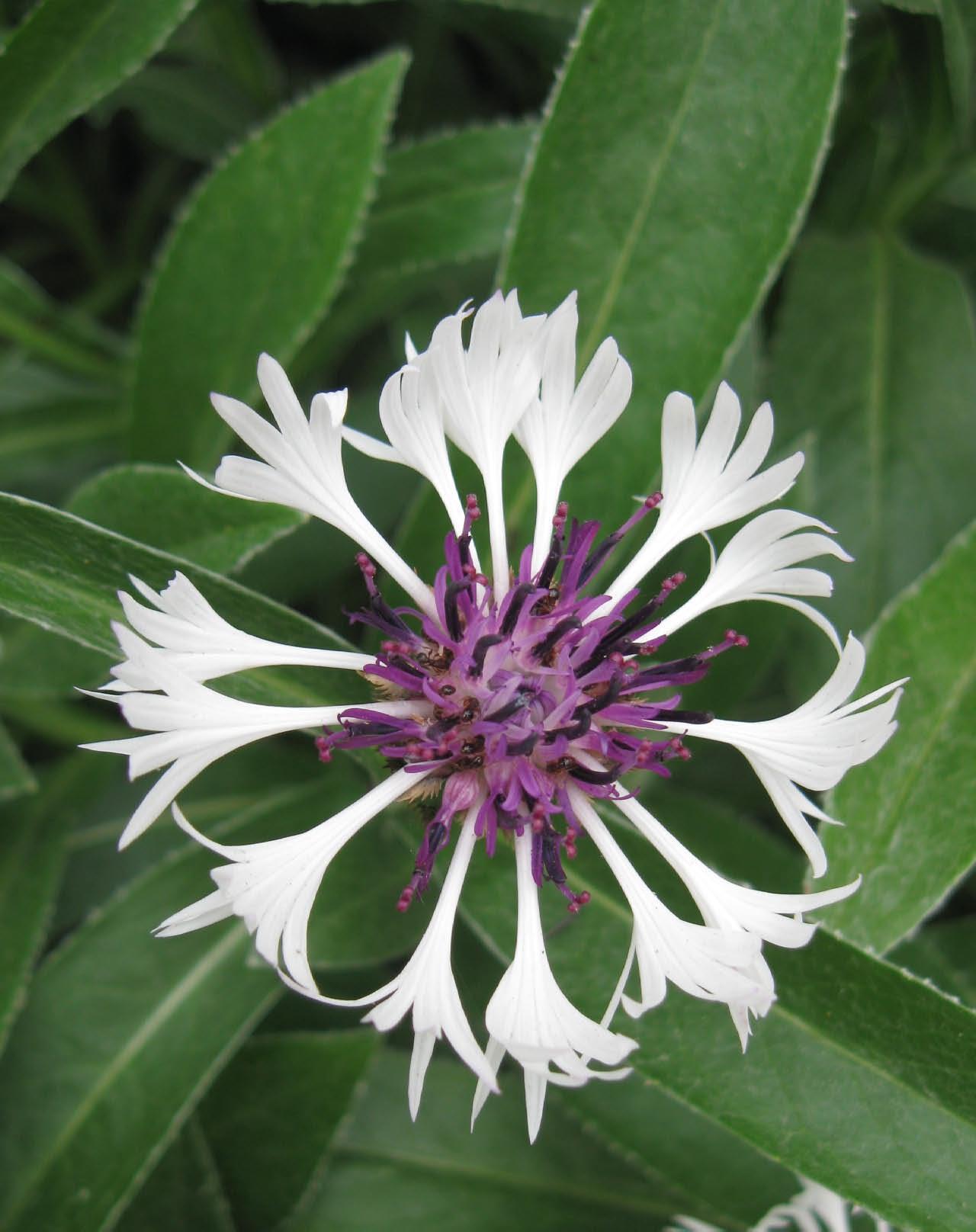

WASHINGTON g a rdener
the magazine for gardening enthusiasts in the Mid-Atlantic region
How to be a Green Gardener
Native Spring Flowers
A New Penstemon
Overhead Power Line Safety
Mock Strawberry
Blackberry Fizz Cocktail
Growing African Miniature Bottle Gourd
“Earth, I Thank You” Documentary Premieres
Garden Book Reviews and Contest
Summer Bulbs for Containers
Meet Ilana Z. Rubin, Forest Therapy Guide


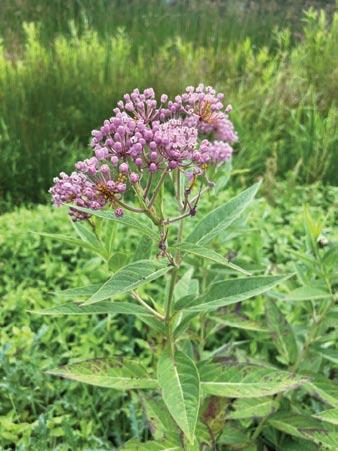

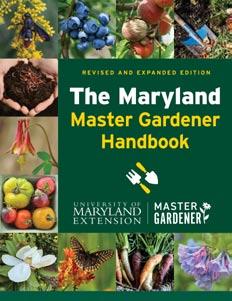
Your Ad Here

Are you trying to reach thousands of gardeners in the greater DC region/Mid-Atlantic area? Washington Gardener Magazine goes out on the 15th of every month. Contact KathyJentz@gmail.com or call 301.588-6894 for ad rates (starting from $200) The ad deadline is the 10th of each month. Please submit your ad directly to: KathyJentz@gmail.com

Need a Garden Club Speaker?
Washington Gardener Magazine’s staff and writers are available to speak to groups and garden clubs in the DC region and ONLINE! Call 240.603.1461 or email KathyJentz@gmail.com for available dates, rates, and topics.

RARE AND EXCEPTIONAL PLANTS FOR THE
Barry Glick
Sunshine Farm and Gardens 696 Glicks Road
Renick, WV 24966, USA Email: barry@sunfarm.com www.sunfarm.com

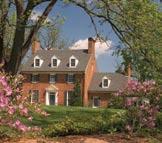
www.greenspring.org
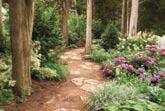
Green Spring Gardens
A “must visit” for everyone in the metropolitan Washington, DC, area. It’s a year-round goldmine of information and inspiration for the home gardener. It’s an outdoor classroom for children and their families to learn about plants and wildlife. It’s also a museum, a national historic site that offers glimpses into a long, rich history with colonial origins. Located at 4603 Green Spring Rd., Alexandria, VA. Information: 703-642-5173.
Photo credit: Rick Borchelt.
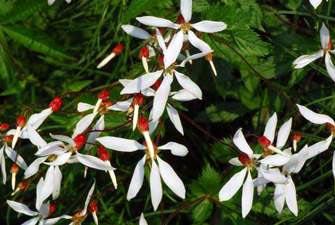
Got a Garden Question?

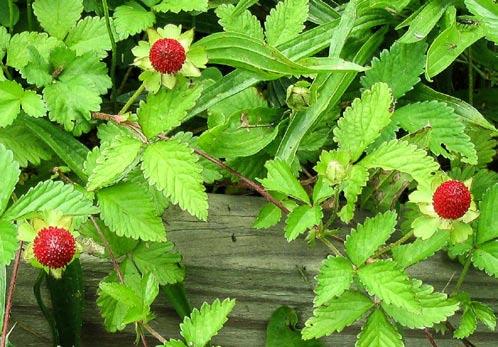
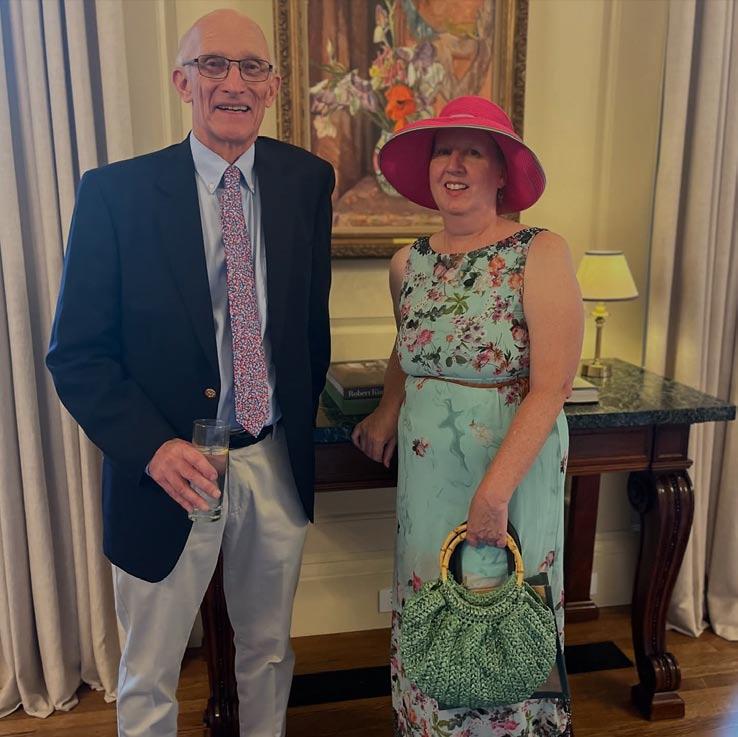
A Salute to British Gardens
There is no denying that American gardens have been heavily influenced by the British gardens of yesterday and today. From Capability Brown to Gertrude Jeckyll, we American gardeners read the books of legendary British gardeners and quote them ad nauseam.
Modern British gardening celebrities, such as Monty Don, are avidly watched and followed on social media by American gardeners. I have many friends who flock to talks by British gardening experts and make annual treks to the Chelsea Garden Show.
It is often said that the current British monarch, King Charles, loves gardening and is known as the “Gardener King,” so it was with great eagerness that I attended the King’s Birthday Party at the British Ambassador’s Residence in Washington, DC, earlier this month. It was a wonderful event, honoring his gardening legacy as well as celebrating all things British, from the classic gin martini to the luxury Aston Martin sports car. There were even samples of traditional British dishes to sample. Of course, my attention was fully focused on the gardens and talking gardening with anyone whose ear I could bend.
Sincerely,

Kathy Jentz, Editor/Publisher, Washington Gardener, KathyJentz@gmail.com
Credits
Kathy Jentz
Editor/Publisher
Washington Gardener 826 Philadelphia Ave. Silver Spring, MD 20910
Phone: 301-588-6894
kathyjentz@gmail.com www.washingtongardener.com
Ruth E. Thaler-Carter Proofreader
Colin Davan
Ian Ferris Miguel Zarate Interns
Subscription: $20.00
• Washington Gardener Blog: www.washingtongardener.blogspot.com
• Washington Gardener Archives: http://issuu.com/washingtongardener
• Washington Gardener Discussion Group: https://groups.google.com/g/ washingtongardener/
• Washington Gardener Twitter Feed: www.twitter.com/WDCGardener
• Washington Gardener Instagram: www.instagram.com/wdcgardener
• Washington Gardener Facebook Page: https://www.facebook.com/ WashingtonGardenerMagazine/
• Washington Gardener YouTube: www.youtube.com/ washingtongardenermagazine
• Washington Gardener Amazon Store: www.amazon.com/shop/wdcgardener
• Washington Gardener BookShop: bookshop.org/shop/WDCgardener
• Washington Gardener Podcast: https://podcasters.spotify.com/pod/ show/gardendc/
• Washington Gardener Plant Store: https://shop.kathyjentz.com/
• Washington Gardener is a woman-owned business. We are proud to be members of:
· GardenComm (formerly GWA: The Association for Garden Communicators)
· Green America Business Network
· National Garden Bureau
· One Montgomery Green
· Ladies in the Landscape
· Potomac Rose Society
· American Horticultural Society
· Maryland Nursery, Landscape and Greenhouse Association
Volume 20, Number 4
ISSN 1555-8959
© 2025 Washington Gardener
All rights reserved. Published monthly.
No material may be reproduced without prior written permission. This magazine is purchased by the buyer with the understanding that the information presented is from various sources from which there can be no warranty or responsibility by the publisher as to legality, completeness, or technical accuracy.
Your editor with Alan M. Jones, President of Manor View Farms in Monkton, MD, at the British Ambassador’s Residence in Washington, DC.
Reader Contest
For our June 2025 Washington Gardener Reader Contest, we are giving away a pair of Long Straight Snips from Corona Tools. The prize value is $14.
The Long Straight Snip has a straight, pointed blade for a wide range of applications. The corrosion-resistant stainless steel blades pivot to prevent rusting, are easier to clean, and reduce germ build-up. It also has an unobtrusive leather strap lock.
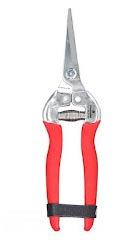
An authentic American brand, the Corona Tools company was born in the orange groves of California in the 1920s. Since then, generations of agriculturists, gardeners, landscapers, arborists, and construction professionals have turned to Corona to find high-quality tools that work as hard as they do. They know that Corona’s iconic red handles are an immediate symbol of quality and long-lasting durability. Learn more about Corona Tools at http:// coronatoolsusa.com/.
To enter to win a pair of Corona snips, send an email by 5:00pm on Monday, June 30, to WashingtonGardenerMagazine@gmail.com with “Corona Snips” in the Subject line and in the body of the email. Tell us what your favorite article was in the June 2025 Washington Gardener issue and why. Please include your full name and mailing address. Winners will be announced and notified on/about July 1. Replies might be published. o
Your Ad Here
Are you trying to reach thousands of gardeners in the greater DC region/MidAtlantic area? Washington Gardener Magazine goes out in the middle of every month. Contact KathyJentz@gmail.com or call 301.588.6894 for ad rates (starting from $200). The ad deadline is the 5th of each month. Please submit your ad directly to: KathyJentz@gmail.com.
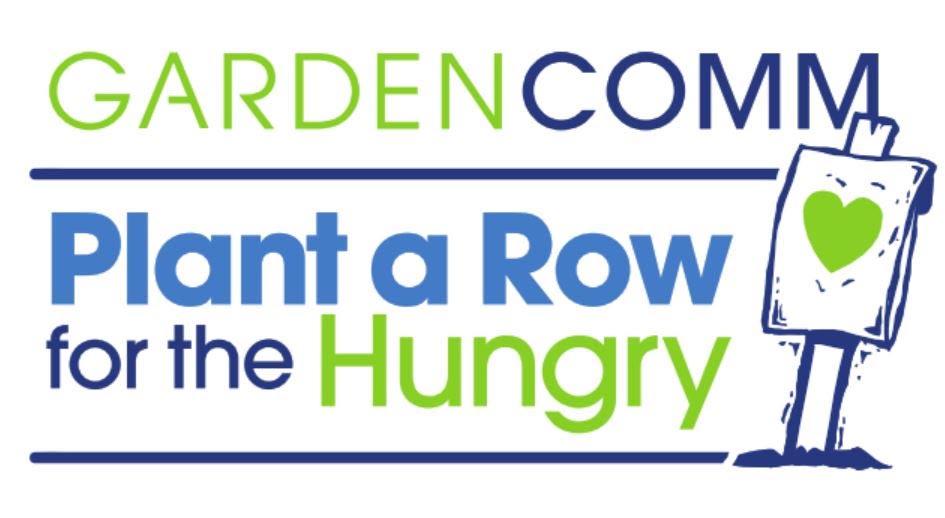
Plant a Row for the Hungry (PAR) is an easy program to participate in and really does not take any extra resources than what you may have in your garden. In normal times, about 35 million people wonder where their next meal will come from. Most of these are children. That’s where PAR steps in.
PAR is such a simple program: It urges gardeners to Plant A Row (or a container) dedicated to feeding the hungry, and then take the harvest to someplace or someone that needs it. Once you have donated, send an email to KathyJentz@gmail.com with the total (in pounds and ounces) of what you gave. That is all there is to it. Easy. Effective. Adaptable and Helpful.
I just listened to your GardenDC Podcast episode with Thomas Christopher on DOGE cuts. Excellent and alarming at the same time. I will spread the word and share your podcast with my fellow master gardeners.
~ Denise Morrow
I appreciated the article in the May 2025 issue of Washington Gardener on where and where not to grow azaleas. After doing a long walk through the U.S. National Arboretum, and loving on all their azaleas, I was ginned up to get a bunch planted, so this article was very helpful. Sadly, my walk was one day after their annual FONA Garden Fair plant sale, which I have never been to, so next year, I am getting that on my calendar!
~ Janet Freitag, Berwyn Heights, MD o

Jentz
“Groundcover Revolution is must-have book for anyone who is interested in having less lawn, fewer weeds, and reduced mulching. The properties charts will save the reader time and money, the pictures provide inspiration, while the detailed plant portraits give the focused information needed for creating beautiful, functional landscapes.”
―C.L. Fornari, GardenLady.com

During our Zoom chat, I noticed Ilana Rubin had a tapestry hanging behind her. It depicted a scene of waterfowl in a pond with thin, white trees and mountains in the background. Rubin said it was a tapestry that her mother hung in her kitchen in their home. Rubin loves it because it reminds her of the area she grew up in. The mountains in the background look a lot like the Adirondacks and the birds in the foreground look like loons, which were common in the area. She says it brings back early memories of the natural environment where she grew up.
A bit of her background...
Rubin is a nature therapy and forest bathing guide, as well as a small business owner. Kindred Nature is her practice, focused on supporting people in reconnecting with nature, realizing we are actually a part of nature, too—not separate from it. She helps facilitate experiences to help guide people back to remembering that or realizing it for the first time.
Heroes and influences
Rubin finds a lot of inspiration in the world around her. She likes to look out her window and see the birds in container wildlife ponds she has set up, as well as plants like jewelweed, which has seed pods that spring open when you touch them. She finds both of these things to be inspiring because these organisms provide moments of awe and wonder that can be found outside of nature.
Ilana Z. Rubin: Certified Nature & Forest Therapy Guide
By Miguel Zarate
She also says that the community of other nature guides in the local region has inspired her, having worked with some in her training. One in particular is Melanie Choukas-Bradley. Rubin saw her give a talk in Washington, DC, and it helped her move toward a particular path when she was deciding to become a forest bathing guide. She also noted that the participants in the programs she guides, as well as family, her sister, and partner in particular, are also huge inspirations.
Getting started in forest bathing Rubin’s decision wasn’t made all at once: it was something she came to over time. Growing up, she spent a lot of time in nature. She then studied anthropology as an undergrad and worked in disability services. Like a lot of people, she was taking time to find what she wanted to do. She wanted to work with something more geared toward nature, so she did a graduate degree in environmental policy, but it still wasn’t the right fit. She wanted to do something with people and nature together. She went though some tough times and faced challenges, and when things got rough, she would go for walks at a pond near where she lives. When she was there, she found greater inner strength and resilience, which helped her deal with things.
Eventually, Rubin heard about forest bathing and nature therapy as an actual practice, which is what she had been doing on her own, just with less structure. It was a way to offer support for other people and help them connect to our shared earth.
Training and qualifications
Rubin says there isn’t a particular training one needs to do to become a guide, since the practice isn’t regulated like being a doctor is, but there are organizations and companies that offer train-
ing and certifications for those interested. Rubin went through training with the Association of Nature and Forest Therapy Guides and Programs.
It was a six-month hybrid training program where you are part of a cohort and learn about different nature connection practices, including learning to identify certain plants like safe plants for making teas—in a lot of their experiences, the guide brings everyone together by sharing some tea and closes the session in an intentional way
After the training, it’s an ongoing certification, and there’s a lot of professional development as well.
Starting her company
Rubin started Kindred Nature back in 2021, inspired because she wanted to share these experiences in reconnecting with nature. Having her own small business gave her opportunities to be creative and participate in partnerships with colleagues gardens and parks in the region. She wants people to feel welcome in nature.
What is forest bathing?
Forest bathing is inspired by the Japanese term 森林浴 (shinren-yoku), which means to take in the atmosphere through your senses. In the practice of forest bathing, individuals immerse themselves and take in the environment through all of their senses.
The benefits include attention restoration theory and lowered stress levels. Forest bathing can also help with anxious thought patterns. Some people she’s worked with have said that they feel like their minds are quieter than they have been in a long time.
Any memories or stories?
One story she told me about was when a group bathing session gave individuals time to find their own areas and relax. One participant was lying down on the side of a hill when two geese
flew in over her shoulders and landed in a body of water in front of her. She felt like she wasn’t a being that they needed to be avoided or worried about. The story was inspiring to the group—it was something that only happened because she was taking things slow. A story of Rubin’s own was while she was out on a walk in the woods on her own in Hemlock Overlook Regional Park, she spotted a luna moth on a red maple tree, just a couple feet up the trunk. Someone was walking by and they didn’t see the moth, so Rubin called out to the person and when they saw the moth, their face lit up instantly. Seeing so much wonder for the natural world is part of why Rubin loves her work.
Favorite place for forest bathing?
Rubin says she doesn’t really pick favorites often. When we spoke, she said she has been guiding in the Meadowlark Botanical Gardens in Vienna, Virginia. Another place she likes is the Hemlock Overlook Regional Park, where she saw the Luna Moth.
What do you do for fun?
Outside of this work, Rubin does a lot of things in nature since it’s always been a passion of hers. She enjoys a good bit of kayaking and ethical foraging. She loves being with her family— they just celebrated the 11th birthday of their dog Gus. She also said that she’s a creative person, even though she’s not the most skillful artist—she likes trying different things.
What do you like to grow?
Rubin has a home garden—a lot of containers and a few raised beds. They also have an old kiddie pool that they’ve turned into a little pond with native aquatic plants and fish that eat mosquito larvae. She admits that since she has a lot going on, the raised beds have grown a little chaotic, but she occasionally goes out to pick a few pine berries.
Her favorite thing to grow recently has been yard-long beans; with their long size and unique flavor, they’re something she enjoys. She also likes that they’re well-suited for the MidAtlantic climate since it’s hot and humid.

Contact information
For anyone interested in reaching Rubin to discuss her practice, Kindred Nature (https://kindrednature.carrd. co/) offers sessions in Northern Virginia, Maryland, and DC. o
Miguel Zarate is an intern this summer session with Washington Gardener. He is majoring in journalism with a minor in sustainability. His favorite thing to grow in his mother’s garden, where he helps out, is mint, because it is so plentiful.

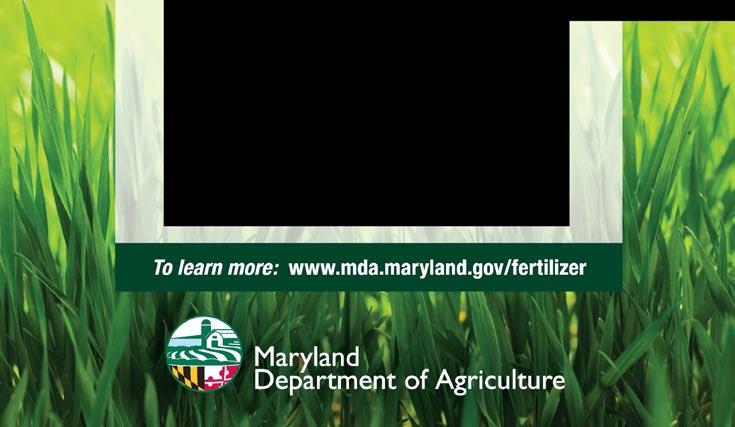

Pictured at left, Rubin recently led a “Root and Bloom” retreat day at Meadowlark Botanical Gardens in Vienna, VA. Photo by Toni Kim.

Earth, I Thank You
By Colin Davan
The life of Anne Spencer and the legacy of her garden is quite a beautiful one in United States history. The 35-minute documentary, “Earth, I Thank You: The Garden and Legacy of Anne Spencer,” presents an in-depth lens into Spencer’s prominence in the Harlem Renaissance from Lynchburg, Virginia.
“We [The Garden Conservancy] felt a responsibility to help amplify Anne Spencer’s story and legacy, ensuring it remains visible, vibrant, and accessible,” said Pamela Governale, Director of Preservation, The Garden Conservancy, and producer of the film.
The Garden Conservancy is a national nonprofit organization that preserves, shares, and celebrates America’s gardens and diverse gardening traditions for the education and inspiration of the public. “We collaborate with gardens
and community partners nationwide, supporting historic restoration, collections management, documentation, and other aspects of preserving gardens.
The Garden Conservancy Open Days program provides access to private gardens across America; our lectures, tours, and symposia offer opportunities for engaged exploration of contemporary ideas in gardening, design, and preservation.”
The film’s use of archival pieces of Spencer’s writing and poetry provide a glimpse into the time of Spencer’s impact. Spencer’s own poetry, other writing, and pictures in the garden pulled from the archives at the University of Virginia, highlight the powerful poetic impact of a middle class Black woman in Lynchburg, VA.
Along with her work, Spencer kept a beautiful garden in her backyard that she worked on year-round. It was a sanctuary for her. The garden is preserved to this day and is a staple in the Lynchburg community. (See more about her garden in our DayTrip article of the June 2020 issue of Washington Gardener Magazine.)
“Earth, I thank you”
By Anne Spencer
Earth, I thank you for the pleasure of your language You’ve had a hard time bringing it to me from the ground to grunt thru the noun
To all the way feeling seeing smelling touching —awareness I am here!
“Her garden was an extension of her intellect, advocacy, and artistry.” added Governale. “By telling her story through film, we aim to shift the discourse from viewing her garden as simply beautiful to recognizing it as a vital site of Black history, with national significance, literary heritage, and cultural memory.”
The symbolism of the garden was important to the directors as well. They wanted to emphasize that the preserved garden represents more than just Spencer’s joy of horticulture.
“The history of that place, the Harlem Renaissance, Anne Spencer, and of her Black middle-class neighborhood. Those are all really important to preserve,” said Michael Udris, of Udris Films, who co-directed the film with his brother David. “Those stories are so important to preserve and tell.”
Through the work of Shaun Spencer-Hester, Executive Director of the Anne Spencer House and Garden and granddaughter of Anne Spencer, the garden museum and house are open to the public to enter the world of Anne Spencer. The house and garden are filled with rich Black history and an owner who has hosted the likes of many well-known names, such as Martin Luther King Jr., W.E.B. Du Bois, Zora Neale Hurston, and many more notable Black activists and intellectuals.
Anne and Edward Spencer and grandchildren at home in the late 1920s. Photo courtesy of Anne Spencer House and Garden Museum, Inc.
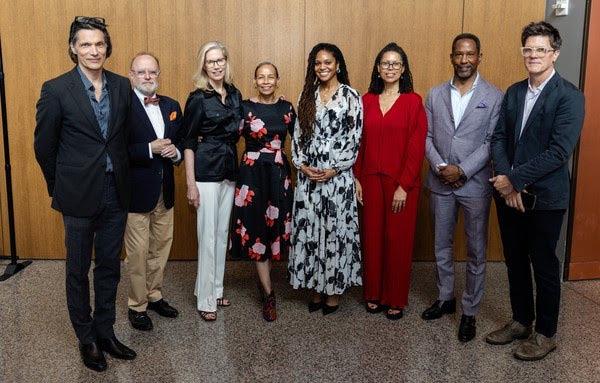
Notable attendees and presenters at the Earth: I Thank You premiere in Washington, DC, included David Udris, filmmaker, Udris Film; James Brayton Hall, President and CEO of the Garden Conservancy; Kate Cordsen, Garden Conservancy board member and Executive Producer of Earth, I Thank You; Shaun Spencer-Hester, Executive Director of the Anne Spencer House and Garden Museum; Dr. Carlyn Ferrari, author, Spencer scholar, and Assistant Professor of English at Seattle University; Dr. Evie Shockley, Zora Neale Hurston Distinguished Professor of English and Director of Creative Writing & Writers House, Rutgers University; Brent Leggs, Executive Director of the African American Cultural Heritage Action Fund and Senior Vice President of the National Trust for Historic Preservation; and Michael Udris, filmmaker, Udris Film. Photo by Annan Productions.
Through restoration projects in the 1980s led by Chauncy Spencer, her son, and 2008 by The Garden Conservancy, preserved the unique feature of the garden.
The film premiered on May 4, 2025, at the National Museum of African American History and Culture in Washington, DC. It will be available to the public. See more at https://gardenconservancy.com/films/spencerpreview. o
Colin Davan is an intern this summer session with Washington Gardener. He is a rising senior at the American University in Washington, DC, studying journalism with a minor in history. He grew up just outside of Boston in two different towns—Hopkinton and Framingham—both with backyards always filled with a wide variety of flowers, herbs, vegetables, and fruits
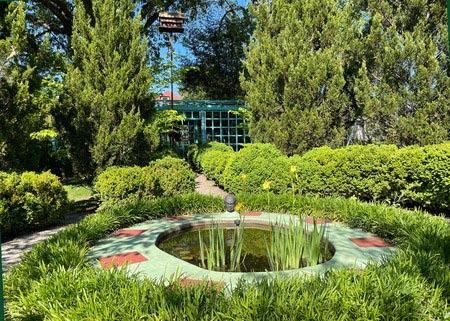
Anne Spencer Pond. Photo courtesy of The Garden Conservancy.
Overhead Power Line Safety Campaign: “Always Look Up”
Data compiled and analyzed by the Electrical Safety Foundation International (ESFI) shows that the most significant category of workplace electrical fatalities is non-electrical workers coming into contact with overhead power lines. Many of these accidents involve workers with little or no electrical safety training. Contact with overhead power lines is also one of the leading causes of electrical fatalities outside of the workplace across the United States.
In fact, overhead power line contact accounts for 48% of all workplace electrical fatalities. The Centers for Disease Control (CDC) reports that between 2018 and 2023, there were 538 total fatalities caused by overhead power lines in the U.S.
A large number of these incidents can be avoided with heightened awareness of outside surroundings. “Overhead power line contacts are unique because in many cases, the fatality occurred when the power line was clearly visible,” said Daniel Majano, ESFI’s program director.
In response, ESFI launched an update to its “Always Look Up” campaign in May to spread awareness to key groups. Some of the groups targeted in this campaign are homeowners, heavy-truck operators, tree trimmers, and roofers. Here are some ways that individuals can find themselves in danger due to overhead power lines.
• At home: Individuals working on roofs or gutters, or using ladders to set up decorations, such as holiday lights, can inadvertently come into contact with power lines around their home. Before starting any work around your house, be aware of overhead power lines and the electrical service entrance to your home. Stay at least 10 feet away from all power lines.
• Tree trimmers: Tree trimming workers often perform their work using elevating work platforms or trimming tools with long handles, allowing them to make contact with tree branches far above the ground. When tree branches grow out and become entangled with overhead power lines, trimmers can
inadvertently contact the lines with their tools.
• Roofers and painters: Individuals doing work on the exterior of a building can make contact with power lines while carrying or setting up ladders.
ESFI encourages everyone to “always look up, in all ways” to avoid contact with overhead power lines. Some additional best practices include carrying ladders horizontally, avoiding touching anything in contact with power lines, and staying 35 feet away from downed power lines.
“We believe that this is an issue where we can save a lot of lives through raising awareness and emphasizing the simple principle of ‘Always Look Up,’” said ESFI Executive Director Jennifer LeFevre, adding, “It’s great advice for anyone doing work outside.”
For more, visit https://www.esfi.org/ always-look-up-resources/. o
Summer Bulbs for Pots and Containers
If you want to create more atmosphere on your balcony or patio, plant summer bulbs in pots now. These bright and colorful additions will make for fabulous relaxing very soon.
Summer bulbs can be planted once the danger of frost has passed. The advantage of bulbs in pots is that you can move them to a frost-free spot if any late spring (or early fall) frost is forecast.
All summer bulbs are suitable for use in pots. Flowers with strong stems or lower-growing summer bulbs are even more suitable because they do not need support. Asiatic lilies, for example, will do very well in pots thanks to their super-strong stems. The dwarf varieties are especially ideal for use in pots.
For easy planting in five steps:
• Choose a pot with a hole in the bottom to allow excess water to drain away. Add some shards to cover the holes, if necessary.
• Fill the pot halfway with potting soil. The packaging of your summer bulbs will state how deep they should be planted.
• Place the bulbs (or tubers) on the soil. Sometimes you can tell what the top or bottom is; for example, if you can spot a growing tip (top) or root crown (bottom). For begonias, the con-
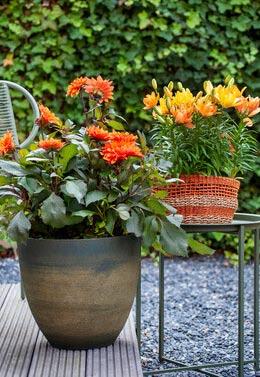
cave side is the top. If you can’t see it, no problem; the bulb will sort it out for itself. Do make sure that there is enough space in the pot, so there will be enough room for the roots later.
• Continue filling the pot with potting soil. Leave some space under the edge for watering. Gently press down the soil.
• Water generously.
Group the same bulbs, or if you prefer, different varieties together in a pot. A combination with a perennial plant also makes for a nice effect. A pink Begonia, for example, is an excellent match with blue/purple sage (Salvia). With its broad leaves, Canna lily is an exception—it likes to stand alone. Put Canna lilies in a large pot because they need space.
Group different pots and colors together on your garden table or by your (reclining) chair, such as dahlias, gladioli, and callas. Now it’s time to relax in your outdoor space.
A few interesting facts and tips:
• Summer bulbs will provide color for many months: lilies, for example, will flower as early as June and dahlias can flower as late as the first night frost.
• Cut off any wilted flowers regularly; this will ensure rich, continued flowering.
• Many summer flowers are also suitable as cut flowers; just a single branch in a pretty vase creates wonderful summer vibes.
Find more information about flower bulbs at www.flowerbulbs.com. o
Trucella, Tiny Moon.
Photo courtesy of www.flowerbulbs.com.

New Plant Spotlight
Penstemon Summit Sweets™
Ruby ‘Balsummru’ PPAF
This new, colorful Penstemon is a tall feature in the landscape and a fantastic thriller in mixed containers.
Scientific Name: Penstemon hybrida
Common Name: Beard Tongue
Hardiness Zone: 5a to 8b
Hardiness Degree: -20°F (-20°C)
Blooming Season: Spring, late spring, summer
Plant Habit: Upright
Characteristics: Attracts bees, butterflies, and hummingbirds; droughttolerant and heat-tolerant
Water: Light
Fertilizer: Once a month
Spacing: 26–32" (66–81 cm)
Height: 30–34" (76–86 cm)
Width: 24–30" (61–76 cm)
Exposure: Sun
This plant introduction is from Darwin Perennials. For more information, visit https://www.darwinperennials. com/. o
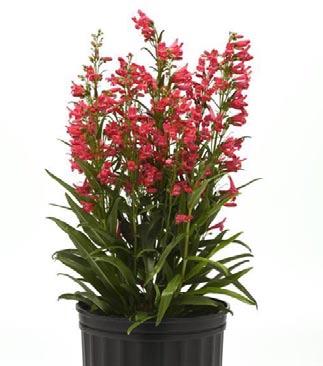
Quick Links to Recent Washington Gardener Blog Posts

• Meet the New Summer 2025 Interns
• GardenDC Podcast on Short Break
• Trillium Plant Profile
See more Washington Gardener blog posts at WashingtonGardener.blogspot.com o
June–July Garden To-Do List
• Direct-sow annual flower and vegetable seeds.
• Water newly planted trees and shrubs weekly or as needed.
• Contact a Certified Arborist to have your trees’ health inspected.
• Check on your container plants daily and keep them well-watered.
• Watch for insect and disease problems throughout your garden.
• Mow in the early evening and cut off no more than one-third of the grass height at one time. Leave clippings on the ground to provide nutrients.
• Add barley straw (in a bale or ball) to your pond to improve water clarity.
• Take cuttings from azaleas and roses to start new plants.
• Harvest herbs to use in salads and summer dishes.
• Try a few new tropical plants on your patio.
• Shape your evergreens and hedges. Prune boxwoods.
• Look for slug trails in the early morning and put out slug bait as needed.
• Tie up climbing roses and other wandering vines.
• Fill in bare spots in the garden with annuals.
• Deadhead spent flowers to encourage reblooming.
• Prune flowering shrubs as their flowers fade—last chance to do so for fallblooming camellias.
• Spray roses with Neem oil every two weeks.
• Start a sunflower patch with help from a few kids.
• Harvest strawberry beds daily.
• Cut a few flowers to enjoy at your workplace.
• This is the perfect time to apply grub control.
• Change the water in your birdbath daily and throw a Mosquito Dunk (or Mosquito Bits) into any standing water.
• Put in supports for tomatoes and tall-blooming plants such as dahlias.
• Order spring-flowering bulbs to arrive for planting this fall.
• Take photos and update your garden journal.
• Inspect your garden hose for leaks and tighten all connections.
• Weed.
• Sow beets, beans, cucumbers, pumpkins, and squash for fall harvesting.
• Sharpen your lawnmower blade.
• Avoid using pesticides or any chemicals near your water garden.
• Make hummingbird food by boiling 2 cups sugar in 4 cups of water.
• Turn your compost pile.
• Clean up fallen fruit and berries.
• Cover berry bushes and fruit trees with bird netting.
• Dig up garlic when the tops turn brown. Place in a well-ventilated room or a dry, shady spot to cure for three weeks, then store.
• Fertilize your azaleas and rhododendrons, and monitor them closely for any lacebug damage.
• Sow heat-tolerant greens like Swiss Chard and mustard greens in part-shade.
• As the heat and humidity move in, take it easy by working in the morning or early evening to avoid intense sun. Leave the big projects for this fall. For now, concentrate on maintaining the beds you’ve already established and nurturing your new plantings. o
Photo courtesy o f Darwin Perennials.

The Urban Garden: 101 Ways to Grow Food and Beauty in the City is all about small-space gardening solutions!
By Kathy Jentz and Teresa Speight
Published by Cool Springs Press/Quarto Homes
Order it today at: https://amzn.to/3yiLPKU
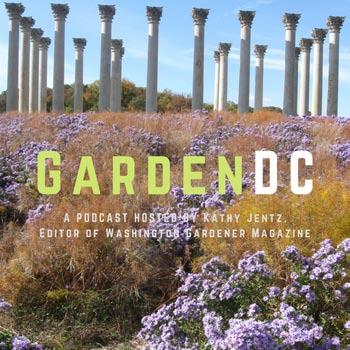
GardenDC Podcast
The GardenDC podcast is all about gardening in the greater Washington, DC, and Mid-Atlantic area. The program is hosted by Kathy Jentz, editor of Washington Gardener Magazine, and features guest experts in local and national horticulture. The latest episodes include interviews with experts on Dark Sky Research, DOGE Cuts, and Lost Trees.
You can listen online at https:// washingtongardener.blogspot.com/ or on Spotify, Apple, etc o
Classes, Events, and Plant Shows/Sales
• Now through August 30
Summer Hours at the U.S. National Arboretum (USNA)
The USNA is now open until 8pm through the summer. Note that the National Bonsai & Penjing Museum closes at 4pm daily and the USNA Visitor Center closes at 4:30pm daily.
• Now through August 31
U.S. Botanic Garden (USBG) Shifts Open Hours
The USBG will shift open hours for the Conservatory to 11am–6pm. From June 9 through August 31, the shifted hours will allow the USBG to replace the greenhouse glass roof in the Conservatory Garden Court.
• Sunday, June 22, 2–3:30pm Opening Reception for Washington Gardener Garden Photo Show Washington Gardener invites you to the opening reception of our annual garden photo show at Meadowlark Botanical Gardens in Vienna, VA. Free.
• June 24
The Stanton A. Gill Symposium
Join the University of Maryland Extension (UME) and MNLGA for a day honoring Stanton A. Gill. UME has organized a day-long symposium to celebrate Stanton and dedicate the Stanton A. Gill Lab at CMREC. The day will feature morning lectures by Dr. Michael Brownbridge and Dr. Paula Shrewsbury, who will share insights into Stanton’s research passions. The afternoon will feature talks by five industry professionals who were mentored by Gill. Details at www.MNLGA.org.
• Saturday, July 12, 9am–1pm and Saturday, July 19, 9am–1pm Iris Sale
The Francis Scott Key Iris Society is hosting their annual rhizome sale. The July 12 sale is at Richardson Farms. 5900 Ebenezer Road, White Marsh, MD. The July 19 sale is at Dutch Plant Farm, 151 Baughmans Lane, Frederick, MD. They dig the rhizomes the whole week before for each sale. Tall bearded irises are $4 each and medians are $2 each. They will have reblooming irises
and a small selection of beardless irises. New introductions in the last three years are $8 each. All rhizomes are labeled with their names and colors.
Looking Ahead
• Sunday, July 20, 10am–12pm Garlic Festival
Held at the Takoma Park Farmers Market in Takoma Park, MD. Justharvested and cured garlic is the star of the market and available for sale at vendor stands. It’s the perfect match to all of the market’s fresh seasonal produce. The event includes special guests Tony “The Garlic Guru” Sarmiento, who is a CKC Board Member, and Kathy Jentz, GardenDC Podcast host and Washington Gardener Magazine editor. Members of the Takoma Horticultural Club will also be on hand with gardening tips for the home gardener. Free and open to all.
• July 18 through July 20
2025 Kenilworth Annual Lotus & Water Lily Festival
Enjoy Kenilworth Aquatic Gardens in Washington, DC, with daily ranger-led talks, viewing of the lotus and waterlily blooms, crafting, and scavenger hunts. See more at https://kenaqgardens. org/.
• Saturday, August 23, 10am–12pm
Washington Gardener Tomato Taste Held at the Silver Spring Farmers Market in Silver Spring, MD.
• Saturday, September 6 DC State Fair
Online contest entry is now open. Held at Bryant Street, NE, Washington, DC. See dcstatefair.org.
Event Listing Updates
See updated event listings on the Washington Gardener discussion list. Join by emailing WashingtonGardenersubscribe@googlegroups.com
How to Submit Events
To submit an event for this listing, email washingtongardenermagazine@gmail. com with “Event” in the subject line. Our next deadline is July 5 for the July 2025 issue, for events taking place after July 15. o
How to be a GREEN Gardener
By Kathy Jentz
What is a “green gardener”? According to author Richard Lay, “being green” means learning how to live on Earth without hurting it. Extending that principle into the garden only makes sense. Here are several ways you can green up your gardening practices.
• Eliminate Vehicle Trips
Walk, bike, or take transit to buy your gardening supplies. When I want basic things, I can walk to my neighborhood Ace or True Value hardware store—they have almost anything you’d ever need. I don’t have a garden center or plant nursery near enough to walk to, but I can get to them on Metro and bus.
• Get Rid of Gas-Guzzling Equipment
You have choices when buying garden equipment and machines. Do you keep maintaining the ones you have already paid off, but that use a great deal of gas and resources, or do you buy new battery-powered/electric ones? The new ones sound great, but they come with their own costs. Where is that electricity generated (probably a coalburning plant)? Where is the tool manufactured and imported from (probably overseas and shipped by slow boat)? What is the new equipment made from (probably includes plastics and scarce heavy metals)? Often the “green” choice is not the obvious one. A green gardener has to do their research and weigh all the options.
• Share Resources
Get together with other gardeners in your neighborhood or your garden club. Not in a garden club? Find one or form one. You can share tools and equipment, swap seeds and plants, combine deliveries of mulch, soil, etc.
• Conserve Water
Put away the hose. Select droughttolerant plants and use rain-water to hand-water thirsty plants from the supply that you have harvested in rain barrels or cisterns. You can also use “gray water” to water plants, such as the slighty soapy water from your shower and the water you boil pasta in (after it has cooled!).
• Compost
Make a pile and add once-living plant materials (that are not diseased or full of weed seeds) to it. Cut up large sticks and other items to make them break down much faster. Use that compost to amend your soil, as a top dressing mulch, and as a fertilizer.
• Go Organic
Stop using pesticides and herbicides, as well as any artificial fertilizers. I use a fish fertilizer for any edible plants that need a boost, such as tomatoes, and an OMRI-certified one for ornamental plants that are heavy feeders, such as roses.
• Reduce Your Turfgrass Lawn
This past May 20 was the second annual Reduce Your Lawn Day. Pull up some lawn and replace it with groundcovers that are more suited to the growing conditions in your landscape and more eco-beneficial to wildlife in this area, such as Golden Ragwort in a sunny open spot and native ferns in a damp, shady area. Learn more about Reduce Your Lawn Day at ReduceYourLawnDay.org.
• Ditch the Plastic Look for alternatives to plastic in your garden. New materials are being introduced to the growing market to replace many of the plastic items we use daily from grow bags made out of recycled jeans to start pots formed from composted cow manure. If you have plastic pots already, re-use them until they break and then recycle them.
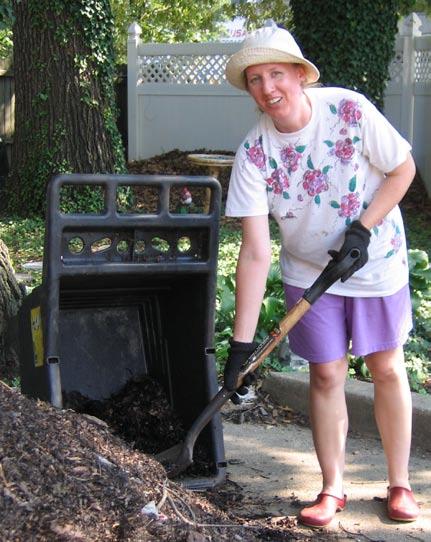
• Eliminate Invasives Attack the invasive plants in your garden a little at a time and soon you’ll have more green growing space to plant natives and edibles. Two to start with are Bamboo and English Ivy.
We are all on this planet together, but are we practicing green gardening methods? Being green comes from taking stock and making the best informed decisions we can at that time. Then, we need to regularly take stock and upgrade our practices as new information becomes available. o
For insect pests and diseases, you can learn to live with a little leaf damage. If it starts to effect the overall plant’s health, bring in organic techniques to combat them, such as introducing a predator insect to eat the aphids on your shrubs.
Kathy Jentz is the editor of Washington Gardener. An earlier version of this article appeared in Pathways Magazine.
Not Your Grandma’s Geranium: More Spring Native Plants
By Barry Glick
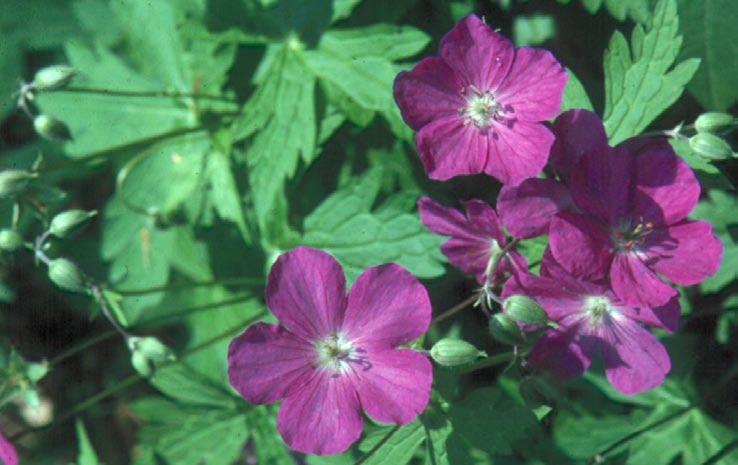
Dear Reader, on the occasion of our last rendezvous, I profiled about a halfdozen native, early spring, ephemeral, DMV plants. If we met daily, I’d have a half-dozen new ones for you every day, but meeting once every other month, it would take a century or two to cover everything native to this lush, botanical paradise. Most of the plants that we spoke about in the last issue are asleep until next spring, but there’s an abundance of new arrivals to profile, so sit back and give me a few minutes of your valuable time to think about what I saw the last time I walked through the woods—specifically, Porteranthus, the Clintonia brothers, Galax, and our native Geranium.
When I talk to the uninitiated about Indian physic (Porteranthus trifoliatus), I tease about a plant that will make you vomit. Actually, that couldn’t be further from the truth; it’s more of an “Attention Capturer.” I doubt if most young people these days have any idea what ipecac syrup is, but in the 1950s, it was in almost every home medicine cabinet. Ipecac syrup is an emetic—it makes you vomit up whatever poison that you may have ingested (like the time I was waiting for the “Mister Softee” truck to come and I swallowed the quarter that my mother gave me for a large cone of vanilla custard). The Ipecac of commerce was made from a Central/ South American plant, and because the Native American tribes had no access to it obviously, they discovered that Porteranthus trifoliatus or its cousin, Porteranthus stipulatus, produced the same results.
These two, late spring, early-summer bloomers are identical in flower with their frilly, pure-white blooms, but they flower a month apart. The only other difference is the edge of the leaves is more filigreed on the Porteranthus stipulatus. The Porteranthus trifoliatus blooms first.
The genus Clintonia is named for former New York Governor Dewitt Clinton. There are two species of this charming, easy-to-grow native shade plant. The first to bloom is the Speckled Wood Lily (Clintonia umbellulata). Its supple, long, dark-green leaves produce a sturdy, 12" stem of pure-white, sometimes speckled flowers in the shape of a globe.
But wait, there’s more! These attractive, long-lasting flowers turn into a globe of turquoise berries that, over time, turn dark-black and last all summer and fall. You’ll see Clintonia growing in a variety of habitats, from dry-ish woods to rich organic soils. Its cousin, Clintonia borealis, on the other hand, is found in moister to wet habitats.
Clintonia borealis has foliage very similar to Clintonia umbellulata, but the flowers are dramatically different. Instead of a globe-like white flower, the 6–12" flower stems have about three to five pendulous, bright-yellow flowers. In its chosen habitat, Clintonia borealis tends to grow in moister conditions, but in the garden, it’s quite happy just about anywhere. In fact, I have a feeling that when I wasn’t watching, the two species may have gotten together and produced a love child.
That’s right! I’m starting to see some Clintonia umbellulata offspring with yel-
lowish flowers. Stay tuned.
How about a plant that a city in southwestern Virginia is named after? Or is the plant named after the city? The plant in question is, of course, Beetleweed (Galax urceolata). Galax is a low-growing, groundcover of a plant with extremely glossy foliage and short spikes of attractive white flowers. In days of yore (well, before just about everything we consume came from China and was made of plastic), Galax leaves were harvested to use in the making of Christmas wreaths. If you would like to grow this plant in a shady part of your garden, remember to check your soil acidity because Galax prefers rich, moist acidic soil.
Last but not least, we have our native Geranium. The word Geranium derives from the Greek word Geranos, which means crane, in reference to the fact that the seed head resembles the head and beak of a crane. Come on, use your imagination here. I’m sure that at some point in your life, your mother or grandmother had a window full of brightly colored geraniums, or some of those “Scented Geraniums” that really do smell like chocolate or peppermint or lemons or whatever the label proclaims. Well, I’ve got news for you kids. Those are not Geraniums! They are in the Geranium family, but they are in the genus Pelargonium
Our native Geranium, Geranium maculatum (pictured at top), is quite ubiquitous on road banks in full to dappled sunlight just about everywhere. It makes a wonderful plant for the garden, even in deep shade. Its showy, variably colored blooms are pale- to deep-pink over dark-green foliage and bloom just about the entire month of May. The word maculatum means “spotted,” but you will rarely see any markings on the foliage. o
Barry Glick, a transplanted Philadelphian, has been residing in Greenbrier County, WV, since 1972. His mountaintop garden and nursery is a mecca for gardeners from virtually every country in the world. He writes and lectures extensively about native plants and Hellebores, his two main specialties, and welcomes visitors with advance notice. He can be reached at barry@sunfarm.com, www.sunfarm.com, or 304.497.2208.
A Fruity and Refreshing Concoction: Blackberry Fizz Cocktail
By Ian Ferris
Blackberries have a long history in America. They were used by Indigenous people as a food source, as well as medicinally and as a dye for animal skins. Now, they are grown around the world and consumed by many as a sweet summertime berry.
In the Washington Gardener community garden plot, we grow a thornless variety called ‘Navaho’ that has been fruiting well and contains a strong sweetness that we enjoyed sampling while harvesting them.
If you are not growing them yourself, you can get some from local pick-yourown farms or farmers’ markets.
I made this cocktail for myself and my family, and got glowing reviews. I hope you will enjoy it, too!
Ingredients
• Vodka
• Fresh blackberries (blackberry jam works as a substitute)
• Lime juice (fresh-squeezed, if you have it)
• Ginger ale
• Simple Syrup (if needed)
Directions
Muddle* your blackberries and add a little sugar if needed for extra sweetness. Next, put your muddled blackberries along with the rest of your ingredients into a cocktail mixer and shake well. Pour your cocktail through a fine strainer into the glass to remove any seeds and chunks. Enjoy!
Garnishes
To spice up your presentation, you can skewer a few fresh blackberries and place the skewer over top of your glass as seen in the picture here.
Variations
You can substitute the vodka with either rum or gin—depending on your preference.
For anyone under 21 or wishing a nonalcohlic version, you can leave out
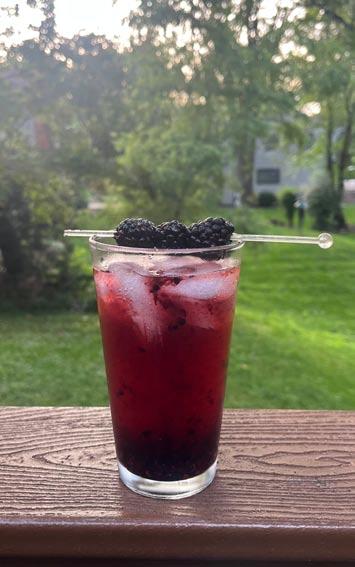
the vodka or substitute it with one of the many zero-proof spirits now available, such as Strykk and Arkay. o
Ian Ferris is an intern this summer session with Washington Gardener. He is a rising senior at the University of Maryland studying journalism and sustainable agriculture. He worked two summers on a garden farm near Annapolis, MD, called Maidstone Harvest, where he learned a lot about growing vegetables in a sustainable and efficient fashion.
*To “muddle” is to gently crush fruit or other fresh ingredients to release their juices and essential flavors in a cocktail.
This drink is a sweet blend of summer flavors. The lime will hit your palate first, followed by a subtle sweet aftertone of blackberry that leaves you feeling like you’ve just enjoyed one of the sweet berries that can be included in the garnish.
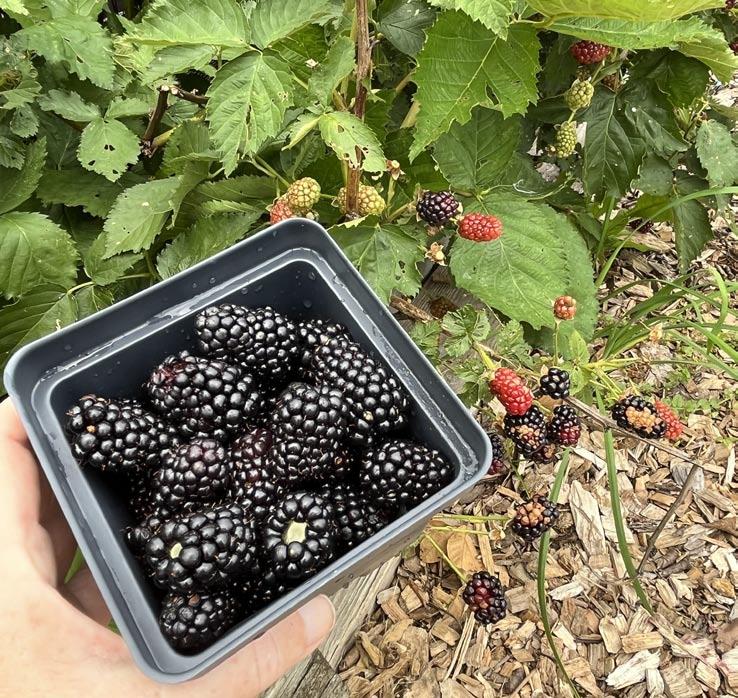
Ask the Expert
By Miri Talabac
Any Evergreen Native Groundcovers?
Q: What native evergreen can be used as a groundcover under a tall tree?
A: Many of our low-growing native plants are not evergreen, but I can share a few ideas to get you started. For simplicity, I’ll assume that the soil is well-drained, deer browsing isn’t a big problem, and the tree’s roots are not too water-hogging (or that you can irrigate as needed). If the site is partly sunny due to high branching, you may have a few more options than in a more shaded site.
A couple of our local ferns are evergreen, although they can get somewhat flattened by late winter, and any leaf litter you retain for wildlife benefit also might cover part of their foliage up, making this attribute less of a highlight. Christmas Fern (Polystichum acrostichoides) and Intermediate Wood Fern (Dryopteris intermedia) are two contenders.
Partridgeberry (Mitchella repens) and Woodland Stonecrop (Sedum ternatum) are ground-hugging creepers, but slow to spread, so don’t expect a weedexcluding carpet of either. Still, they’re a nice accent for weaving around other short plants or hardscaping features like accent rocks or stumps.
Golden Groundsel (Packera aurea) keeps at least some of its foliage into winter, although this too can get partially buried by drifts of fallen leaves. (Not a problem for the plant, but it will reduce winter interest.) With potentially aggressive spread by seed or runners, keep it clear of slower companions.
I’ve seen Crossvine (Bignonia capreolata) used as an appealing groundcover. Even if it doesn’t get enough sun under the tree to flower well, its leaves are usually retained in winter, and might even blush burgundy to add color. Both Mt. Cuba Center (Delaware) and the U.S. National Arboretum (DC) feature this vine in their landscapes, where it both climbs a tree and skirts some of the ground around it.
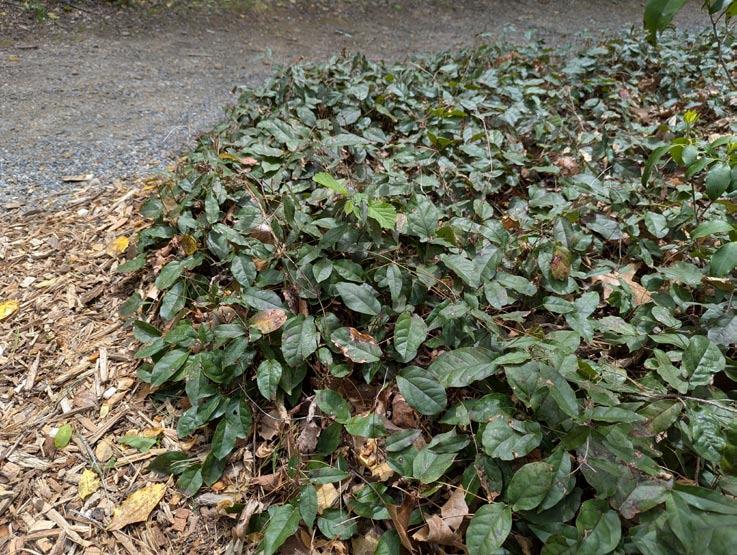
Aster Foliage Issues
Q: In past seasons, my asters have developed bleached-looking leaves, even when we haven’t had a drought. Was that a disease? Some of the leaf edges looked a bit burnt. How can I avoid it again?
A: This sounds like feeding damage from a population of Chrysanthemum Lace Bugs. They’re named after mums, but they feed on many aster family members, especially asters themselves. I’ve also seen them on goldenrod foliage.
Named for their mostly clear, lacy-patterned wings, the adults are fairly small at about 4 mm long. Don’t confuse them with the similarly named, unrelated, larger, and clear-winged lacewings, which are beneficial insects. More than a dozen other lace bug species occur in Maryland, their hosts ranging from azalea or rhododendron to oak, walnut, fringetree, linden, eggplant, and even grasses.
Like other “true bugs,” lace bugs have piercing-sucking mouthparts, which they jab into leaf cells and then suck out the contents. Picture a wall-towall array of juice boxes that you pierce and empty one-by-one with a straw, and you’ve got a decent mental image of a plant-feeding bug’s dining habits.
This gradual removal of the leaf’s chlorophyll causes the bleaching. When large areas of feeding damage coalesce, they make whole sections of the plant look pale and stressed. I have seen some leaf-edge browning and drying associated with these lace bugs, even though the roots have enough moisture.
Water can be a solution here, although not for irrigation (unless the soil is dry a few inches down). Use a garden hose and aim a strong spray of water at the aster leaf undersides. This will blast off most of the bugs, especially if you repeat it about once a week. Adults can fly and might return, but the juveniles cannot fly. Or, just give the plant a good, vigorous shake and see what falls off, which you can then dispatch with a shoe or trowel. It’s not perfect and won’t eradicate them all, but it doesn’t have to—the plant will live and regrow just fine next year unless an unrelated issue has weakened the roots.
Avoid using insecticides on plants that are as popular with pollinators as aster family members are (they also support some caterpillars). If nothing else works, horticultural oil or insecticidal soap might suppress a high lace bug population. You’ll have to thoroughly coat both leaf surfaces with the
Crossvine used as a groundcover.
Photo by Miri Talabac.
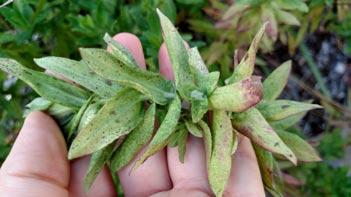
spray, though, and this can be difficult to do well on short or dense plants. You also shouldn’t spray while it’s above 85 degrees or you risk damaging the plant even more, which puts a damper on this tactic in summer. Plus, contact insecticides need re-applying every one to two weeks for a few sessions to catch missed individuals, which can be a hassle.
Since treatment won’t reverse existing leaf damage, I typically wouldn’t bother with trying one, aside from the hose method. Besides, this is a native insect, so it’s part of the ecosystem services we’re trying to provide by planting these species. Everything feeds something else: Predatory insects and other beneficial organisms will take out some of the lace bugs on their own. Chrysanthemum Lace Bug overwinters in leaf litter and other debris, so while leaf litter has many benefits (and may shelter lace bug predators as well), this is one risk with keeping it around previously infested plants. o
Miri Talabac is a Certified Professional Horticulturist who joined the University of Maryland Extension Home and Garden Information Center in 2019 as a horticulture consultant. She is a graduate of UMCP with a focus in entomology. To ask a gardening or pest question, go to http:// extension.umd.edu/hgic and select “Ask Extension.” Digital photos can be attached.
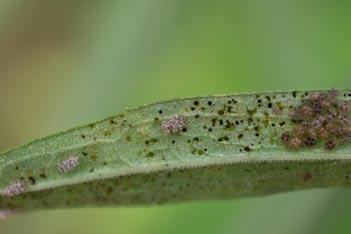
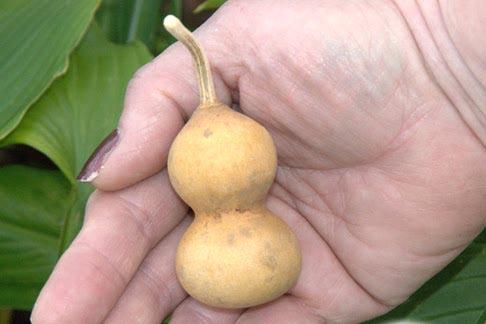
The bottle gourd (Lagenaria siceraria) is believed to be one of the earliest cultivated gourds. Bowls and containers were made out of the fruit.
Gourds are an excellent choice for growing in school gardens. This seed is well adapted to the size of little hands and the curiosity of young minds. Culinary historian Michael Twitty has written that African Mini Bottle Gourds are “a superb seed for children to grow, harvest, cure, and decorate.”
This gourd was most likely used by African Americans to carry medicines and other rare, precious condiments. The 2 to 3-inch long gourds, which are shaped exactly like bottle gourds, are an ancient cultivar that was well known to the cultures in Africa. Like the watermelon seeds, African American Mini Bottle Gourd seeds were probably brought to the U.S. in the pockets of enslaved Africans. Today, they can be grown and decorated as Christmas ornaments or pendants for necklaces.
Gourds are believed to be one of the earliest cultivated species. Because the only known populations of wild gourds exist in certain areas of Africa, archaeologists have theorized that prehistoric humans who lived near the rivers on the West Coast of Africa first used the small gourds that grow wild in these environments as early as 10,000 years ago. Somehow gourds made it to South America perhaps as long ago as 9000 BC. By 7000 BC, gourds were being cultivated in Peru and Mexico.
African Mini Bottle Gourd
By Barbara Melera
Unlike all the other plants in the vegetable family, gourds were never valued for culinary purposes. Instead, gourds were valued for utilitarian purposes as tools, containers, floats, utensils. and, in some cases, currency.
According to the research paper “Bottle Gourd: History Uses, and Folklore,” “it is a symbol of longevity and good luck in China. The number of decorated bottle gourd containers denotes the social status of a Hausa tribesperson in Nigeria, and form an essential or indispensable part of a bride’s dowry. The bottle gourd has been for a long time considered as originated and domesticated in Africa.”
Even in modern Africa, decorated gourds remain culturally relevant. They are frequently employed in ceremonies and rituals as symbolic objects denoting fertility or protection
Gourds belong to the same family as squash and pumpkins. They come in a wide variety of shapes and sizes. One of the many remarkable facts about gourds is that many varieties can float for more than 300 days in sea water without destroying the viability of the seeds inside the gourds. o
Barbara Melera is president of Harvesting History (www.harvesting-history.com), a company that sells horticultural and agricultural products, largely of the heirloom variety, along with garden tools and equipment.
Chrysanthemum Lace Bug damage on an aster. Photo by Miri Talabac.
Chrysanthemum Lace Bugs on Goldenrod. Photo by Dave Clement, UME.
Making a Mockery of Strawberries

By Rick Borchelt
In folklore, the full moon of June is often called the “Strawberry Moon,” and for good reason. For much of temperate Europe and America, the peak of the strawberry season coincides with the rosy-pink rising of the June full moon.
Washington’s Weed Watchers, though, know it’s also the peak of the mock strawberry season. Yes, there it sits in your lawn or raised bed, or in the perennial border, mocking you both with its red fruit promising luscious, juicy snacks and by the delicate-looking appearance that belies its tenacity in evading June’s gardeners.
Mock strawberry (Potentilla indica) is another one of our imported weeds, hailing this time from Asia (hence the indica part of the name, meaning native to India). The plant’s geographic origins give rise to another common name, Indian strawberry, which is regularly misinterpreted as a reference to its use by Indigenous Americans.
Despite being a fake, Potentilla indica comes by its outward similarity to garden strawberries honestly. Both are members of the rose family, Rosaceae, a relationship displayed not just by its red achenes (the technical term for the “berry” of the strawberry), but also by the five-petaled flowers that characterize all rose family members. In the case
of true strawberries, including wild species, the flower is white; mock strawberry flowers are bright-yellow.
Mock strawberry shares another important trait with garden strawberries: It reproduces not just by seeds, but also with stolons (from the Latin stolo, or branch), modified hairy stems that run along the ground and root all along the way, producing new plants at an amazing clip everywhere they touch soil. Stolons are commonly called runners in garden parlance for this habit of running along the ground.
While garden strawberries prolifically produce stolons, they prolifically produce fruit, too. Not so mock strawberry; both flowers and fruit are scant, in comparison. Most of a mock strawberry’s energy goes into world domination through their stolons, which rapidly take over entire swathes of yards and gardens — those frail-looking, but wiry, little stems can infiltrate under and into everything else in the yard and garden.
It’s not unusual to see an entire bed—or yard,
even—overtaken by mock strawberries. Or, more precisely, by a single mock strawberry. All the plants you see are actually clones of the original neighborhood invader.
One reason they are so prolific, and so hard to control, is due to the lowgrowing habit that the stolons permit. While many weeds can be controlled by regular mowing, mock strawberry is not one of them. In fact, cutting grass too low is one sure way to invite mock strawberries to take over your lawn. This ability to grow lower to the ground than competing grasses or weeds, or peonies or roses, is their superpower.
Until recently, mock strawberry had a different scientific name Duchesnea indica. The genus name Duchesnea honored French botanist Antoine Nicolas Duchesne, who wrote an important treatise about the edible strawberry genus Fragraria in the late 18th century. Genetic work on mock strawberries, though, showed that it is more closely related to potentillas than strawberries. Some members of the potentilla clan are important ornamental plants, like Potentilla fruticosa ‘Happy Face’ and ‘Marmalade’. Potentillas are tough, hardy characters, whether weedy or wanted.
The mockery of mock strawberry is most evident in its achene. While the tiny seeds of supermarket strawberries are still there, you see them only as the little freckles on the outside of the huge, mouth-watering fruit in which they are embedded. Even wild strawber-
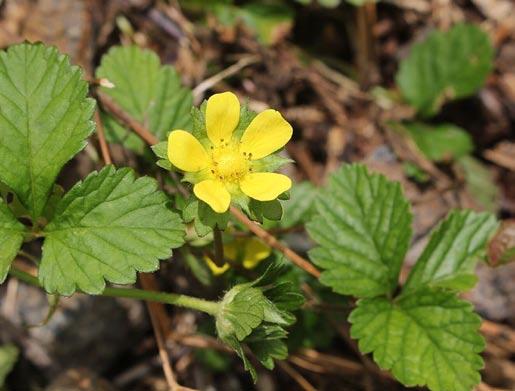
Photo by Rick Borchelt
The five-petaled yellow flowers distinguish mock strawberry from the white flowers of true strawberries. Photo credit: Alpedak/CC BY SA 4.0.
ries—and here, that would be Virginia strawberry (Fragraria viriginiana)—are delectable, if smaller than the jumbo commercial varieties.
But just try eating a mock strawberry. The achene is mostly seed surrounded by a dry, mealy fruit; it’s like eating crunchy pink straw—or so I imagine.
Wild strawberries are seldom a weedy problem in the garden; they are generally creatures of forest and open woodland and can’t stand the competition from other plants in the full sun of crowded lawns and gardens. Like mock strawberry, Virginia strawberry is found throughout the DC area.
The easiest way to tell mock strawberry from Virginia strawberry is by how the fruit is borne on the stem. In true strawberries, both wild and commercial, the achene hangs from the end of the stem and droops down. Mock strawberries carry their scarlet fruit straight up on the end of the stem.
Controlling mock strawberry is not easy unless you resort to herbicides, and their penchant for growing in and under vegetables and ornamentals, and twining themselves into lawn grasses means targeting just the mock strawberry with chemicals is difficult at best. Unfortunately, this means your best option is hand-pulling mock strawberries, being sure to get all the pesky runners when you do. Luckily, they are early to leaf out in the spring when little else is green, making them easy to spot. Where possible, mulch where you removed mock strawberries. Since the plant likes moist soil, improving drainage and aerating the soil also help reduce mock strawberry’s competitive edge and makes a mockery of its plans to take over your yard! o
Rick Borchelt is a botanist and science writer who gardens and writes about natural history at his home in College Park, MD. Reach him with questions about this column at rborchelt@gmail.com.
Your Ad Here
Contact kathyjentz@gmail.com for ad rates. The ad deadline is the 10th of each month. Please submit your ad directly to: KathyJentz@gmail.com.
Centaurea
By Kathy Jentz
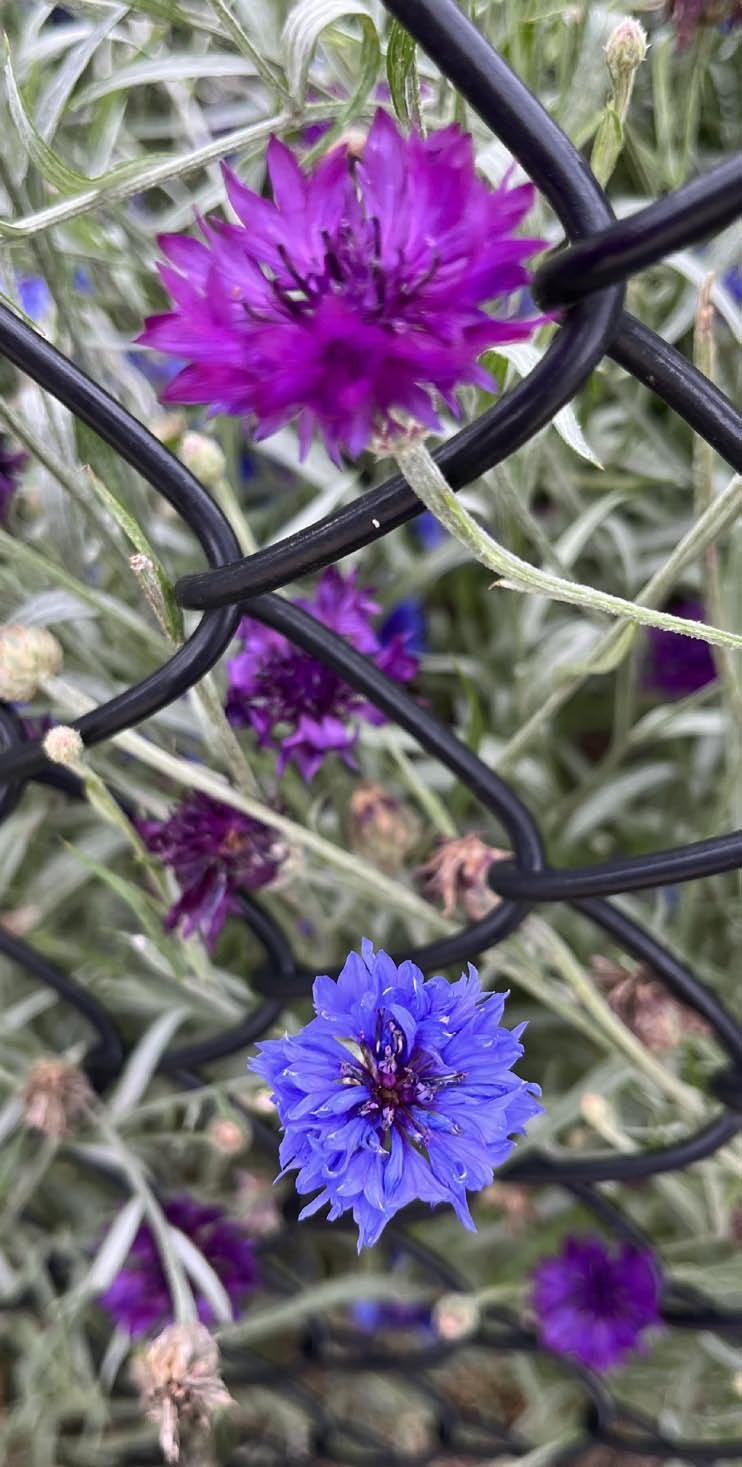
Centaurea (Centaurea species) are an annual or perennial flower—depending on which species you are growing. The annuals are commonly referred to as Cornflowers and the perennial as Knapweeds. There are about 80 perennial Centaurea species. Most Centaurea flower in shades of blue, purple, and white. Their flowers resemble thistles, but they are not thorny or sharp. The blooms are pollinator magnets and are often grown in cut-flower gardens.
Centaurea prefer full sun and well-draining soils.
Centaurea cyana is also known as Bachelor’s Buttons. They bloom in late spring in bright-blue and other hues. They are hardy to USDA Zones 2 to 11. They are easy to start from seed and are deer- and drought-resistant.
Centaurea montana is also known as Mountain Bluet. It is a perennial that is hardy to USDA Zones 3 to 8. Remove spent flower stalks after bloom. Sparse rebloom in late summer-early fall may occur. Plants need to be divided every two to three years.
Centaurea is native to Europe and is used in folk medicine as an herbal digestive .
Note that several species of Centaurea, in particular spotted knapweed (Centaurea maculosa), are considered invasive in some parts of North America. o
Kathy Jentz is the editor of Washington Gardener.

Essential Guide to Organic Vegetable Gardening: Techniques and Know-How for Planning, Planting, and Tending a Home Vegetable Garden Organically
Author: American Horticultural Society
Publisher: Cool Springs Press/The Quarto Group
List Price: $28,99
Order Links: https://amzn.to/45ujANs and https://bookshop.org/ a/79479/9780760392812
Reviewer: Colin Davan
[Note: This book contains some photos taken by our editor, Kathy Jentz.]
The Essential Guide to Organic Vegetable Gardening from the American Horticultural Society exhibits a profound knowledge of the process of growing vegetables at home. It is filled with helpful tips and tricks, as well as objective information that provides the reader with a multitude of ways to start and improve a vegetable garden. The 272-page guide contains captioned pictures, clearly labeled charts, graphs, informational bullet points, and short, easy-to-read paragraphs. It has four parts: Inspiration, Getting Started, Techniques and Maintenance, and The Fruits of Your Labor, with each section being internally organized by two to four chapters.
The opening section, Inspiration, provides some history and context about vegetable gardening. Another chapter incorporates a gallery of different garden layouts to provide the reader with some creative ideas.
The second section, Getting Started, is the perfect title for the next four chapters that follow. It breaks down building the perfect garden, vegetables and seasons to grow, and best styles depending on the sea-
son, as well as location across the U.S..
The third section, Techniques and Maintenance, gets into the “nitty gritty” of growing vegetables. From soil information to plant protection and care, these four chapters have it all to ensure a strong garden and healthy crop.
The final section, The Fruits of Your Labor, has two chapters that present the usages of your final product. It informs readers about the proper harvesting strategies while including a “how to” profile for more than 20 edible vegetables.
One key that is constantly emphasized throughout the guide is adaptability. The guide makes it clear that it does not matter where you are, or what your experience is. It provides information for all climates across the U.S. and for all levels of experience.
The American Horticultural Society is a nonprofit organization, based in Arlington, VA, founded in 1922 with currently more than 22,000 members. The society strives to spread gardening and horticultural practices across the country with goals of building strong, healthy communities and contributing to a sustainable planet. I found this guide from the American Horticultural Society to be extremely helpful. The visual elements blend nicely into the information, allowing for a comfortable read. I felt that it was engaging for experienced and new gardeners. I recommend it to those interested in growing vegetables in their backyards. The structure flows almost in a step-by-step manner, allowing for a fun cycle of growing crops and reaping the benefits. If you are looking to start or improve your vegetable garden during any time of the year, this might be the book for you. o
Colin Davan is an intern this summer session with Washington Gardener. He is a rising senior at the American University in Washington, DC, studying journalism with a minor in history. He grew up just outside of Boston in two different towns—Hopkinton and Framingham—both with backyards always filled with a wide variety of flowers, herbs, vegetables, and fruits
Cannabis Farming: How to Grow, Harvest, and Process Organic, Field-Grown Cannabis
Authors: Adam Davidoff and Ryan Power
Publisher: Storey Publishing
Order Link: https://amzn.to/4e8pCWd and https://bookshop.org/ a/79479/9781635868265
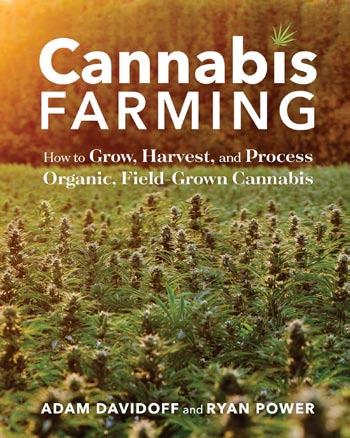
List Price: $29.99
Reviewer: Miguel Zárate
Cannabis Farming by Adam Davidoff and Ryan Power is an essential read for those wishing to approach cannabis farming from an agricultural angle, but it does not provide much in the way of personal growing or gardening of the crop. The book uses mostly photos from their farm; occasionally, information is delivered visually to the reader with easy-to-read diagrams.
Davidoff and Power are two farmers based in California who started their own cannabis farm after discovering how valuable farming cannabis could be. The beginning of the book documents parts of their journey to grow the crop on a large scale, as well as informing interested farmers. The primary goal is to illuminate the mysticism surrounding cannabis and its cultivation.
The introduction of the book notes that growing cannabis at that scale for sale comes with a lot of hurdles, including the stigma against it present in the U.S.
The book makes the otherwise daunting task of growing cannabis very approachable, offering many simplified explanations for aspects of the plant and how to pick the genetics that are most important to you when starting with your seeds.
The book goes over various threats someone might face when growing cannabis. Rather than treating fungi or insects as a problem, the authors encourage prospective farmers to view them as a part of the system as a whole. You can’t defeat the problem permanently, since these things are a natural part of growing. Insight like this is why this book could prove to be useful to even casual growers.
The next section talks about planting and focuses on the preparation of the field and certain systems one might choose to use.
For each system, the writers talk about different methods and which they prefer. After that comes summer management with weeding and canopy control to provide the best plant possible. Skimping on any of these could lead to problems down the line.
Finally, the book talks about what the harvest and processing looks like. First, you have to find out when the ideal harvest window is and once that’s done, dry and store the crop until it’s packed and sold.
In another sense, the visuals in the book are incredible, with beautiful photos and easy-to-read and -understand diagrams. The chapters are laid out in a timeline that goes from planning in the late winter and early spring to planting in the spring, management in the summer, then harvesting, storage, and processing in the fall and winter. The timeline format makes this a very solid grower’s handbook for anyone at any level of cultivation. While there isn’t a lot in the sense of small-scale gardening, I feel this book will still be an interesting read for anyone interested in cannabis as a crop. o
Miguel Zarate is an intern this summer session with Washington Gardener. He is majoring in journalism with a minor in sustainability. His favorite thing to grow in his mother’s garden, where he helps out, is mint, because it is so plentiful.
Wild, Tamed, Lost, Revived: The Surprising Story of Apples in the South
Author: Diane Flynt
Publisher: University of North Carolina Press
List Price: $35.00
Order Links: https://amzn.to/45odYUN and https://bookshop.org/ a/79479/9781469676944
Reviewer: Ian Ferris
Diane Flynt’s Wild, Tamed, Lost, Revived functions as both a personal story of her own journey from corporate worker to Foggy Ridge Cider creator and an almanac on the history, story, and complexity of apples, particularly in the South. Flynt begins with a dream of owning her own agriculture enterprise. After growing up around farms and nature, she always knew that she wanted to return to the soil and make it her life’s work. She found a nice property in Virginia and began the grueling process of creating her own orchard and eventually a cider worth selling.
The ups and downs of this process are portrayed in Flynt’s use of descriptive imagery and personality as she made her way
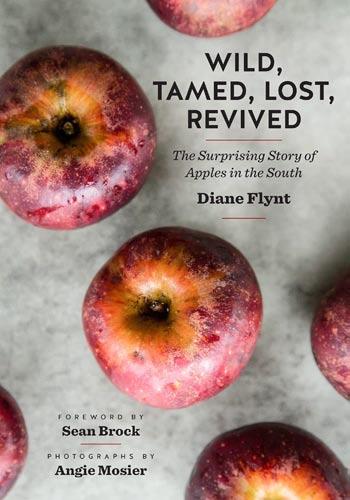
through the early stages of her dream and into production. You could almost end the story here. She made her way from nothing into a functioning cidery, but with that success comes expansion and a whole new list of problems.
Alongside Flynt’s rich storytelling is her immense knowledge and research of apples, from William Fitzhugh’s 17thcentury orchard to the popular Southern apples of today. As her business grew and more people in other regions began enjoying Foggy Ridge Cider, Flynt noticed that she was spending more time in the office than on the farm. This again required her to evaluate the balance at which she worked and where, so she could enjoy the lifestyle she had built for herself.
As her story comes to an end, she focuses more on her time with Creighton “Lee” Calhoun, sometimes referred to as the “savior” of Southern apples. His immense love and research for apples inspired her to focus on the history and future of apples rather than growing them. She also talks of her mother and her stories of apples and childhood that resonated with her—a sentimental message that makes the reader realize, as Flynt does, that apples are a way to bring people together in a memory or a place, which is the real reason we love them, along with their succulent, sweet taste.
Flynt’s book is a testament to apple and cider making—a real person’s journey in growing and distributing apple-made cider that begins in her youth and ends in her retirement. Flynt’s stories at the beginning of chapters of her own journey could be a book in their own, describing the tribulations and triumphs of starting and running
her own cidery, but it’s the history and stories of apple aficionados before her that outline her true love for apples and agriculture.
They provide an in-depth look at how apple production came to be in the southern United States, and she shares many stories as rich as her own that show how deeply romantic a farmer’s life can be. If we can take one thing from Flynt’s work, it’s to show appreciation for and observe all the small things that make a hard day’s work worth it. o
Ian Ferris is an intern this summer session with Washington Gardener. He is a rising senior at the University of Maryland studying journalism and sustainable agriculture. He worked two summers on a garden farm near Annapolis, MD, called Maidstone Harvest, where he learned a lot about growing vegetables in a sustainable and efficient fashion.
Take to the Trees: A Story of Hope, Science, and Self-Discovery in America’s Imperiled Forests
Author: Marguerite Holloway
Publisher: W. W. Norton & Company
List Price: $28.99
Order Links: https://amzn.to/4eb8CyH and https://bookshop.org/ a/79479/9781324036449
Reviewer: Beth Py-Lieberman
A childhood memory resonates. The lower bough of an enormous dogwood tree arches low to the ground just within reach of a 10-year-old’s outstretched arms. She pulls up and gets one leg over the tree limb. Up into its highest reaches she climbs, with a book firmly tucked inside a back pocket. There, where the birds convene and the gentle breezes flutter the leaves, the girl settles safely into her perch where two of the tree’s branches intersect. Hours go by—and that was how I spent several of my childhood summers.
To climb a tree is no easy feat, especially as our bodies age. We lose that lithe strength and unguarded fearlessness. Science journalist Marguerite Holloway wanted to retrieve some of that childhood exuberance, so she set out to learn to climb with the Women’s Tree Climbing Workshop, which has trained some 2,000 female tree professionals, scientists, arborists, artists, and adventurists.
“I also wanted to overcome,” Holloway writes, “a terror of heights that had develBook Reviews continued on page 22

oped after I became a mother… dizzying and destabilizing, it is a feeling not unlike the one I have when thinking about climate change.”
The workshops, taking place around the country, along with other sessions on aerial rescue, chainsaw safety, and first aid, are conducted by twin sisters Bear LeVangie and Melissa LeVangie Ingersoll, both skilled arborists, tree-climbing champions, and selftaught scholars of trees and forests. Along with teaching about the gear, knots, strategies and techniques, the sisters foster a kind of self-help community supporting women in their quest for not only professional skills but life skills, while building respect for the trees they climb.
Said one participant: “They really highlighted that you’re not just climbing a tree, you are entering an ecosystem and you are being held up by a living organism.”
For Holloway, the workshops provided entree to her own profound self-discovery after the trauma of her brother’s death by suicide and tracing her mother’s life story through the pages of a journal her mother had written and illustrated in the 1950s and ’60s about her own fascination for trees. “Climate change was well underway when my mother started her journal,” Holloway reports, but the effects were not nearly as spectacular yet.
For all of us confronting climate change anxieties, Holloway draws inspiration frm reporting on the ambitious work of individuals racing against time to know and under-
stand the magnificent pressure that forests are facing. Some three trillion trees are estimated to remain on the planet with some 15 billion lost every year to deforestation, pests, and disease. The equation is devastating. “The scale of death and disease is unimaginable in extent and speed,” she writes.
Holloway speaks with ecologist Suzanne Marchetti of Gunnison, Colorado, who is documenting the decline of the aspen forest. One of its threats is a fungus, called artist’s conk, which makes its ugly presence known at the base of the tree. Swaths of dead trees can be found at Kebler Pass, the largest aspen stand in the state.
At the University of California Berkeley, a plant pathologist is studying how a fungi that was originally beneficial is now attacking trees in what he calls the “Dr. Jekyll and Mr. Hyde effect.” Matteo Garbelotto has diagnosed the fungi as the cause for more than 90 percent of the dying trees over the last decade
An invasive beetle, the emerald ash borer, first detected in Michigan and Ontario in 2002, is now the most costly and destructive insect in North America. Climbers have to be careful in an ash tree, one expert warns: “Trees that have been fully affected by emerald ash borer have a consistency that is not unlike Styrofoam.”
In Connecticut, Robert Marra is a forest pathologist studying fungi but recently, he’s been documenting a new threat: a nematode-destroying beech tree foliage that may have come from Japan. “An infected leaf can contain hundreds of thousands of nematodes,” says Marra. Trees in Michigan,
Maine, Virginia, and Ontario, Canada, are suffering from its impacts.
Each of Holloway’s interviews bring crushing reality to what we all know and feel as the opportunity window closes. In 2024, global temperatures reached 1.5 degrees Celsius above the pre-industrial record. This marks the first of the milestone points that climate change scientists have long warned would be a pivotal tipping point.
Holloway’s book is one of both sorrow and joy. Through her eyes, we learn to see trees as sentient beings. Her journey to know them intimately from within their boughs and to understand the crises they face is one we all need to take. If only we could reach up into a bough and pull ourselves agilely upward to gain the birds’ eye vision and wisdom... Would that finally spur the worldwide cumulative action we know we must take?
“Everything that flows from trees and forests—clean air, biodiversity, cooler temperatures, clean water, human health, carbon kept solid and out of atmospheric currency, rain, regional weather patterns, culture, history—is unraveling,” writes Holloway. “If trees are to continue to sustain us and to help us address our apocalyptic mess, we need to pay them more attention, give them more care. We need to take to the trees.” o
Beth Py-Lieberman is the author of The Object at Hand: Intriguing and Inspiring Stories from the Smithsonian Collections (Smithsonian Books, 2023). Until her retirement in 2023, Py-Lieberman served as senior museums editor at the award-winning Smithsonian magazine.

“Inspire. Connect. Grow.”
The National Garden Bureau is a nonprofit organization that exists to educate, inspire, and motivate people to increase the use of garden seed, plants, and products in homes, gardens, and workplaces by being the marketing arm of the gardening industry. Our members are experts in the field of horticulture and our information comes directly from these sources. Find out more at https://ngb.org/



BACK ISSUE SALE!
YOU CAN REQUEST A SINGLE COPY OF PRINT BACK ISSUES FOR $6 EACH OR ANY 6 BACK ISSUES FOR $24, OR ALL 40+ PRINT BACK ISSUES FOR JUST $100. PRICE INCLUDES POSTAGE AND HANDLING. PLEASE SPECIFY THE ISSUE DATE(S). ORDER MUST BE PREPAID BY CHECK OR MONEY ORDER. SEND ORDERS TO: WASHINGTON GARDENER, 826 PHILADELPHIA AVE., SILVER SPRING, MD 20910
MARCH/APRIL 2005
• Landscape DIY vs. Pro
• Prevent Gardener’s Back
• Ladew Topiary Gardens
• Cherry Trees MAY/JUNE 2005
• Stunning Plant Combinations
• Turning Clay into Rich Soil
• Wild Garlic
• Strawberries
JULY/AUGUST 2005
• Water Gardens
• Poison Ivy
• Disguising a Sloping Yard
• Kenilworth Aquatic Gardens
SEPTEMBER/OCTOBER 2005
• Container Gardens
• Clematis Vines
• Sponge Gardening/Rain Gardens
• 5 Insect Enemies of Gardeners
NOVEMBER/DECEMBER 2005
• Backyard Bird Habitats
• Hellebores
• Building a Coldframe
• Bulb Planting Basics
JANUARY/FEBRUARY 2006
• Garden Decor Principles
• Primroses
• Tasty Heirloom Veggies
• U.S. Botanic Garden
MARCH/APRIL 2006
• Top 10 Small Trees and Large Shrubs
• Azaleas
• Figs, Berries, & Persimmons
• Basic Pruning Principles
MAY/JUNE 2006
• Using Native Plants in Your Landscape
• Crabgrass
• Peppers
• Secret Sources for Free Plants
JULY/AUGUST 2006
• Hydrangeas
• Theme Gardens
• Agave
• Find Garden Space by Growing Up
SEPTEMBER/OCTOBER 2006
• Shade Gardening
• Hosta Care Guide
• Fig-growing Tips and Recipes
NOVEMBER/DECEMBER 2006
• Horticultural Careers
• Juniper Care Guide
• Winter Squash Growing Tips and Recipes
• Layer/Lasagna Gardening
JANUARY/FEBRUARY 2007
• Indoor Gardening
• Daphne Care Guide
• Asparagus Growing Tips and Recipes
• Houseplant Propagation
MARCH/APRIL 2007
• Stormwater Management
• Dogwood Selection & Care Guide
• Early Spring Vegetable Growing Tips
• Franciscan Monastery Bulb Gardens
MAY/JUNE 2007
• Roses: Easy Care Tips
• Native Roses & Heirloom Roses
• Edible Flowers
• How to Plant a Bare-root Rose
JULY/AUGUST 2007
• Groundcovers: Alternatives to Turfgrass
• How to Pinch, Prune, & Dead-head
• William Paca House & Gardens
• Hardy Geraniums
SEPTEMBER/OCTOBER 2007
• Succulents: Hardy to our Region
• Drought-Tolerant Natives
• Southern Vegetables
• Seed Saving Savvy Tips
NOVEMBER/DECEMBER 2007
• Gardening with Children
• Indoor Bulb-Forcing Basics
• National Museum of the American Indian
• Versatile Viburnums
JANUARY/FEBRUARY 2008
• Dealing with Deer
• Our Favorite Garden Tools
• Delightful Daffodils
MARCH/APRIL 2008
• Patio, Balcony, Rooftop Container Gardens
• Our Favorite Garden Tools
• Coral Bells (Heuchera)
MAY/JUNE 2008
• Growing Great Tomatoes
• Glamorous Gladiolus
• Seed-Starting Basics
SUMMER 2009
• Grow Grapes in the Mid- Atlantic
• Passionflowers
• Mulching Basics
• Growing Hops
FALL 2009
• Apples
• How to Save Tomato Seeds
• Persimmons
WINTER 2009
• Battling Garden Thugs
• How to Start Seeds Indoors
• Red Twig Dogwoods
• Unusual Edibles to Grow in Our Region
SPRING 2010
• Community Gardens
• Building a Raised Bed
• Dwar f Iris
• Broccoli
SUMMER 2010
• Fragrance Gardens
• Watering Without Waste
• Lavender
• Potatoes
FALL 2010
• Vines and Climbers
• Battling Stink Bugs
• Russian Sage
• Garlic
WINTER 2010
• Paths and Walkways
• Edgeworthia
• Kohlrabi
you trying to reach thousands of gardeners in the greater DC region/MidAtlantic area? Washington Gardener Magazine goes out in the middle of every month. Contact kathyjentz@gmail.com or call 301.588.6894 for ad rates (starting from $200). The ad deadline is the 5th of each month. Please submit your ad directly to: kathyjentz@gmail.com
Got a Garden Question?
Got a gardening question you need answered? Send your questions to KathyJentz@gmail. com and use the subject line “Q&A.”
Please also include your first name, last initial, and what city and state you are writing from. Then look for your answered questions in upcoming issues.
SOLDOUT!SOLDOUT!SOLDOUT!
SPRING 2011
• Cutting-Edge Gardens
• Final Frost Dates and When to Plant
• Bleeding Hearts
• Onions
• Flavorful Fruiting Natives
JULY/AUGUST 2008
• Landscaping with Ornamental Grasses
• Edible Grasses to Graze On
• Slug and Snail Control
• Sage Advice: Sun-Loving Salvias
SEPTEMBER/OCTOBER 2008
• Autumn Edibles — What to Plant Now
• Beguiling Barrenworts (Epimediums)
• Best Time to Plant Spring-blooming Bulbs
• 14 Dry Shade Plants Too Good to Overlook
NOVEMBER/DECEMBER 2008
• Outdoor Lighting Essentials
• How to Prune Fruiting Trees, Shrubs, Vines
• 5 Top Tips for Overwintering Tender Bulbs
• Harry Lauder’s Walking Stick
JANUARY/FEBRUARY 2009
• Compost Happens: Nature’s Free Fertilizer
• Managing Stormwater with a Rain Garden
• Visiting Virginia’s State Arboretum
• Grow Winter Hazel for Winter Color
MARCH/APRIL 2009
SUMMER 2011
• Ornamental Edibles
• Urban Foraging
• Amsonia/Arkansas Blue Star
• Growing Corn in the Mid-Atlantic
FALL 2011
• Herb Gardens
• Toad Lilies
• Sweet Potatoes
• Cool Weather Cover Crops
WINTER 2011/EARLY SPRING 2012
• Green Roofs and Walls
• Heaths and Heathers
• Radishes
SPRING 2012
• Pollinator Gardens
• Brunnera: Perennial of the Year
• Growing Yacon
SUMMER 2012
• Tropical Gardens
• Captivating Canna
• Icebox Watermelons
SPRING 2013
• Great Garden Soil
• All About Asters
• 40+ Free and Low-cost Local Garden Tips
• Spring Edibles Planting Guide
• Testing Your Soil for a Fresh Start
• Redbud Tree Selection and Care
SOLDOUT!SOLDOUT!SOLDOUT!
• Squash Vine Borer
SUMMER/FALL 2013
• Miniature/Faerie Gardens
• Beguiling Abelias
• Best Viewing Spots for Virginia Bluebells
MAY/JUNE 2009
• Top Easy Summer Annuals for DC Heat
• Salad Table Project
• Grow and Enjoy Eggplant
• How to Chuck a Woodchuck
• Growing Great Carrots
WINTER/EARLY SPRING 2014
• Ferns for the Mid-Atlantic
• Chanticleer Gardens
• Beet Growing Basics
Jentz Prints
Antique Botanical Prints for the decorator, collector, connoisseur, and art lover.
Jentz Prints can be purchased most weekends (weather-dependent) at the world-famous Eastern Market.

Antique prints are affordable—most in the $10-$30 range—and they are the perfect gift idea for that plant lover in your life. And don’t forget to buy a few for yourself! For more information or to get a detailed show schedule, please contact Jentz Prints by email at UllrichJ@aol.com.
